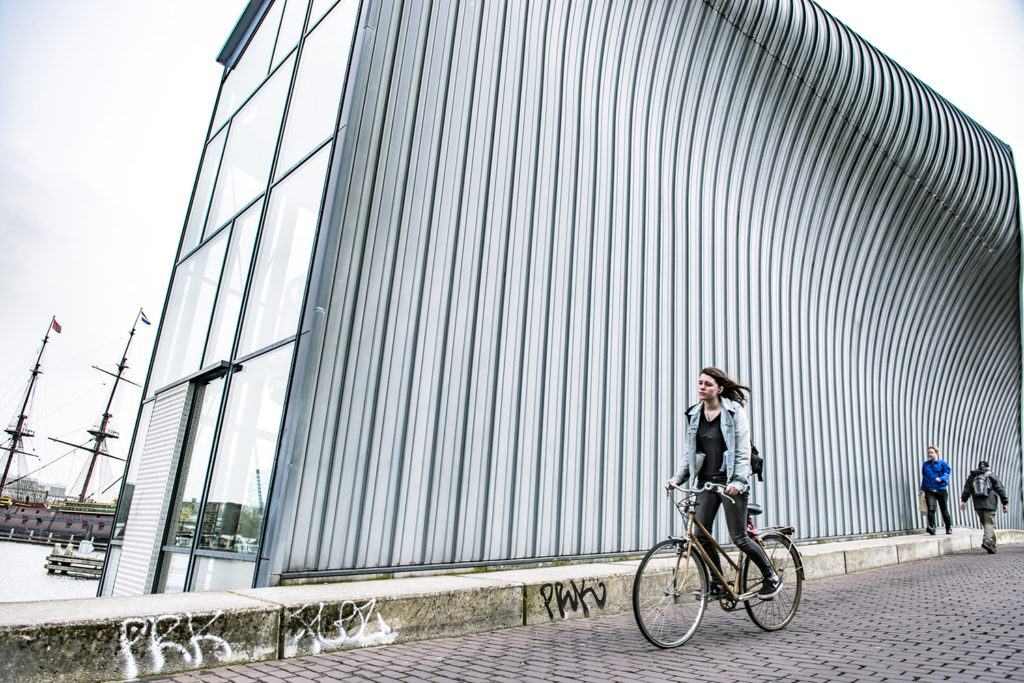Arcam is located in the city centre, at the Prins Hendrikkade. The building is designed by René van Zuuk and it is a compact, sculptural building existing of three layers which are connected by vides.
On the level of the Prins Hendrikkade, the exhibition space and the information point are situated. The lowest level of the building, by the waterside, is used for debates, meetings and school classes’ visits. Since 2006, the permanent architecture presentation – the Arcam Panorama – can be viewed here. The office of Architecture Centre Amsterdam has its working space on the top floor of the building.
The building is covered in coated aluminum that flows from bottom to roof and over, all around the building on opposite sides. A special feature is the sculptural glass facade around entrance at the city-side. The waterside facade exists entirely out of glass.
Architect René van Zuuk about his design:
“Architecture Centre Amsterdam needed a considerably larger accomodation. A beautiful location near the Oosterdok was appointed for this architecture institute. At this location, a small pavilion of Renzo Piano had been built as a viewpoint towards his New Metropolis across the water. The construction task was to integrate the old pavilion into the new design as much as possible. But this was not the only restriction of the project. Due to the difficult location the building envelop was limited to a trapezium-shaped volume divided across three layers."
For the development of the project, three important requirements had to be considered. Seen from the Scheepvaartmuseum, across the water, the building had to come across as modest as possible. Because of this requirement, an opportunity arose to make the building lower at the waterside than at the street side. A second requirement was that the building had a more closed character towards the street level, while it could remain more open at the waterfront facade. Lastly, and perhaps the most challenging part of the construction task, the building had to represent a compact monolith. Due to these requirements, a form has evolved that has made the building into a marker in its environment.
The design of the different facades finds its origins in the applications of a folded skin by Kalzip. This aluminum skin, finished with zinc, is one ongoing closed surface wrapped around the building volume. The different facades of the building each provide their own perspective. The folded skin in combination with the slanted, part-glass facade ensure a spectacular entrance at the Prins Hendrikkade, and a more sober view on the eastern side of the building volume. At the waterfront side, the soul of the building is laid bare, by the glass facades in which the steal profiles are hardly visible. Here, the internal organisation of the various layers in the building is visible.



